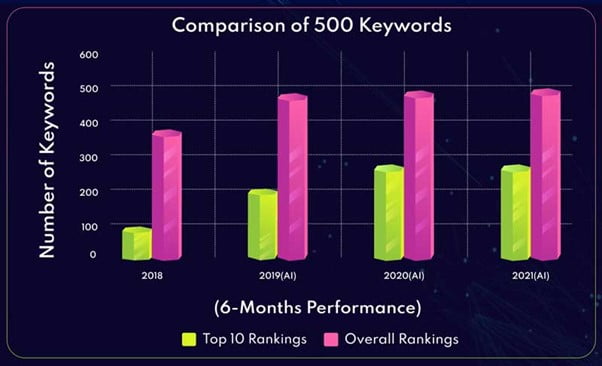Finding, training, and retaining top technical talent is consistently one of IT’s biggest challenges. A new generation of serverless application platforms is a powerful lure for both developers and administrators.

CIOs’ biggest concern for their organization is the difficulty of finding technical talent. The single easiest thing they can do to maximize their technology teams is to work on a next-generation serverless platform.
getty
Good developers are few and far between, exceedingly well paid, and always on the lookout for the opportunity to work for the most forward-looking, exciting organizations. Not surprisingly, CIOs consistently report that one of their biggest challenges is luring top technical talent into their organization. But landing that technical talent can make or break your business. During uncertain times, organizations need to be able to adopt a new game plan on a dime, and in an age where business is digital by default, that means developers are central to success. What can your organization do to convince the best developers to join your team?
During the pandemic, some organizations found using cloud-native serverless platforms was a powerful way to get the most out of their top technical talent, and was effective at keeping the developers they already had happy and engaged.
Educational non-profit Khan Academy, for example, uses Google Cloud’s serverless platform, which it credits with scaling its traffic by 2.5X when schools closed in the early days of the pandemic, and for the fact that its developers now spend 99% of their time working on their application rather than infrastructure or tooling. Likewise, Broad Institute of MIT and Harvard used serverless to create a clinical reporting system for COVID-19 diagnostic PCR testing and scale its testing pipeline, going from a few hundred tests per day to almost 150,000 per day! Better still, it’s easy to onboard new talent onto serverless platforms and make developers very efficient, letting them bring new ideas to market faster than they can with traditional IT platforms. At the end of the day, the ability to have disproportionate business impact is what attracts top developers.
So what exactly is a serverless platform, and how exactly does it help attract and retain technical talent? Long story short, serverless platforms let organizations run their applications in the cloud without having to concern themselves with the setup, maintenance, and operation of the underlying “infrastructure” – think servers, networks, storage, security settings, etc. Configuring these systems usually requires highly-paid systems administrators, or in smaller organizations, the very developers that you want writing your applications! In the world of serverless, all that infrastructure is already set up and configured, waiting for developers to “drop” their applications on and start running them.
And because serverless hides most if not all underlying infrastructure management, coding for serverless is just a matter of developers writing their applications just like they always do. Next-generation serverless platforms extend those benefits further, allowing developers to write in whatever language they feel comfortable with, using whatever tools they need. At Google Cloud, we’ve been pleased (but not surprised) by usability studies of our Cloud Run serverless platform that show developers getting a full service running in under five minutes.
Serverless doesn’t just make it faster for developers to set up their apps — it also helps once the application is up and running, taking a big management load off of operations teams.
Notably, serverless systems take care of “scaling” an application up or down. That means that if your application suddenly starts fielding a lot of traffic (e.g., because of a surge in customers, or a resource-intensive research experiment), the serverless platform automatically spins up more resources to handle the load. No more dreaded timeouts, wheels, or hourglasses—or work for your operations team. Because the platform is continuously rightsizing resources to match demand, you don’t pay for resources that you no longer need.
And because serverless is offered as a managed service, there’s nothing for teams to set up, no time-consuming upgrades to do, or capacity planning or disaster recovery exercises to perform – it’s all done for them. Nor do they need to concern themselves with monitoring and availability of the infrastructure. At Google Cloud, our talented team of Site Reliability Engineers (SREs) work diligently to keep our platforms reliable, scalable, and operationally efficient. SRE is a discipline that Google invented to help keep its numerous billion-plus user services up and running with great performance. Further, SRE-inspired best practices and tools are included in the platform to help you keep your applications and services up and running.
At the same time, today’s generation of serverless platforms also let you run your existing applications. First-generation serverless platforms like Heroku — or even early instances of Google App Engine — required you to write bespoke applications for that platform and that platform alone; next-generation serverless platforms like Cloud Run let you package existing apps in a simple container, and run it without modification. So serverless isn’t just about developing brand new applications, but also extending or reimagining the apps that you’ve already built your business on.
That isn’t to say that serverless is only about developer efficiency — it’s also about enabling creativity. Some serverless platforms also integrate closely with “events”: cloud-native integrations that allow you to trigger code snippets in response to almost any kind of event. Coupled with orchestration tools, serverless allows developers to take existing building blocks, and glue them together into full-fledged applications. It’s like a Lego kit, for software! And ultimately, this may be serverless’s strongest appeal: If there’s one tried-and-true way to catch a developer, it’s to make it easy for them to build new things.
Serverless technologies can make or break IT hiring and retention. To learn more, register for the power of Serverless event to hear how leading companies are using Google Cloud technologies to build out new applications to transform their organizations—fast.







